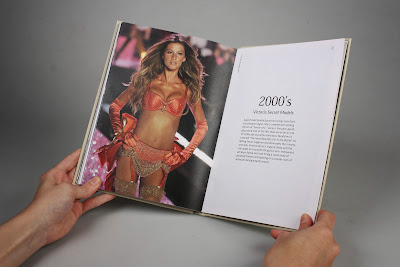This module has allowed me to develop a range of skills such as; research skills, critical analysis to more practical skills, such as book binding. The research element of the module has been the most valuable in terms of sourcing appropriate information, extracting key quotes and theories allowing for a successful piece of design work. These combined skills have led to a well thought through practical element being successfully synthesised.
By carrying out primary research such as conducting surveys deepened my understanding on the subject at hand, from real people. I felt this was perhaps my most beneficial research as I really got a sense of what people thought of body image and the media, which really influenced my essay writing.
My final outcome produced is a 90 page B5 perfect bound coffee table book of the evolution of the female body ideal showing through the decades how the female body ideal has changed. Each decade showcases body ideals and icons from that era, with a short description of who they are and why. I felt that this was the most appropriate outcome, the idea that this 'coffee table' book will be for casual reading as well as provoking conversation and thought about body image and ideals. The imagery I sourced plays the most important part, it speaks for itself and the text is not to overwhelm the reader. I have learnt more about layout and layout skills, as this is an area I needed to improve on originally. The book uses the same modular grid throughout using columns for analysis and imagery which I felt allows for easy reading.
Throughout the module I have managed my time well, I managed to get the first draft of my essay done over christmas, this made sure I had plenty of time to work on my practical. As last year with COP I found myself rushing over things, and doing things for the sake of it instead of enjoying the process from start to finish. I also booked a photography studio which meant I could take good quality photos of the final outcome for my portfolio.
However, if I were to have more time on the project I would have liked to have produced an embossed cover for my book. Also, I wish could of printed a draft of my booklet as there are some little mistakes that I notice, and to practice my book-binding, but unfortunately due to print costs I only managed to print one copy which cost £30.
However, if I were to have more time on the project I would have liked to have produced an embossed cover for my book. Also, I wish could of printed a draft of my booklet as there are some little mistakes that I notice, and to practice my book-binding, but unfortunately due to print costs I only managed to print one copy which cost £30.
















